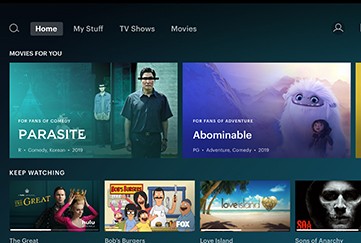Commercials on streaming services like Hulu, CBS All Access, and NBC Universal are so popular, targeted, and measurable that they can create a great advertising opportunity.
For some established omnichannel and ecommerce retailers, streaming commercials — which are called over-the-top (OTT) ads because most cable and streaming boxes used to sit on top of televisions — can provide a level of audience targeting that is similar to social media advertising and search engine and affiliate marketing. Because of this targeting capability, OTT is significantly different than traditional television advertising.
And like other forms of performance marketing, an advertiser only pays for an OTT commercial when there are measurable results — typically when a potential customer watches the complete commercial.
While it might not make sense for a new or small ecommerce company to buy OTT ads, established businesses that are already investing in performance marketing — again, advertisers only pay for measurable results — should consider OTT because of its popularity, targeting, and measuring, as well to diversify promotional investments.
OTT Is Popular
“The projections are, surprisingly, that more U.S. adults — and this is pre-Covid, and Covid has accelerated all of this — in 2020 will have seen OTT ads than will have used Instagram,” said Jesse Math, vice president and OTT lead for Tinuiti, a marketing agency.
“The consumer has evolved, and marketers have to evolve and go to where they are,” said Math, who offered several reasons for retailers to consider OTT advertising.

OTT commercials reach an audience that is at once large and targetable. Photo: Jens Kreuter.
Targeted
With OTT, advertisers can identify potential customers more precisely by combining the demographic info from streaming services with other data sources, including credit bureaus, loyalty programs, mailing lists, and more. Moreover, the data can come from multiple devices, such as mobile phones and computers, not just televisions.
“The mechanism for that happening is cross-device graphing. It generally involves an IP address as a primary, but not exclusive, data point to connect all the devices in the household together.”
“That means that we have a unified view of desktop, mobile, and connected TV screens at the household level,” Math said, adding that this could enable retargeting your site visitors or targeting your customer lists.
This information could be combined with other datasets to make targeting extremely precise — even to the point of being a little spooky.
Consider, for example, what would happen if you combined geofencing data with information from a loyalty card database to target OTT ads.
The marketing director for Bodybuilding.com, a supplement retailer, could target shoppers who currently buy protein powder from a competitor, like General Nutrition Center. The geofencing data would show how recently that shopper had visited a GNC location, and the loyalty database may reveal the specific sorts of protein powders or supplements they were buying.
Given this information, Bodybuilding.com could show that shopper an OTT commercial featuring her favorite products and touting the benefits of home delivery.
OTT targeting could also be blended with other forms of performance marketing like SEM and social media ads. So a marketer could retarget shoppers across SEM, social media, and OTT.
Measurable
The same data that allows an advertiser to target customers also works to make OTT surprisingly measurable.
An advertiser may even have enough information to identify specific customers while still complying with privacy regulations. Thus, an online retailer could run an OTT ad campaign and, possibly, determine which particular shoppers saw the ad and then visited the retailer’s website and made a purchase.
Measurements can be much more complicated when OTT is combined with other forms of performance marketing.
Low Cost
OTT commercials are relatively inexpensive. In 2020, it is not uncommon to pay about $30 per one thousand impressions, which is just three cents each.
When you consider that OTT ads are typically not skippable and that they occupy the largest screen in a household when the audience is generally engaged with that screen, they can be quite a bargain — comparable to YouTube ads in terms of average impression costs.
Ad Diversification
“OTT is a whole new channel and a whole new device introduced into your media mix, and it represents diversification,” Math said.
“So many ecommerce retailers, DTC’s in particular, have their whole businesses built on the back of Facebook. Now our opinion is certainly not that the Facebook apocalypse is upon us. It is definitely not. But what if it were?” Math said.
“Where would you put those [advertising] dollars?… In banners across 10,000 sites you’ve never heard of? Which is a horrible [idea]. You can quote me on that,” said Math. “So what [OTT] represents is a diversification opportunity.”
This idea should not be taken lightly. Retailers dependent on any single performance media channel — search, social, or whatever — should consider how advertising diversification could improve the store’s security and stability.
Beyond Diminishing Returns
Scale, targeting, measurable, low cost, and diversification all make OTT commercials an interesting opportunity for established retailers.
But OTT is probably not the place to start for new or very small stores. Instead, Math recommends focusing first on direct response advertising, such as Google search, Facebook, and Instagram. Once a merchant’s ads in those channels reach a point of diminishing returns, add OTT to the mix.







